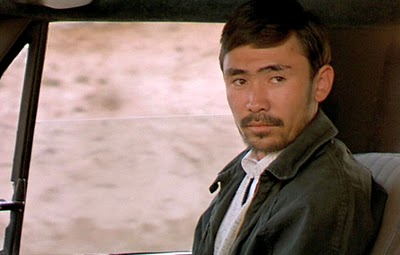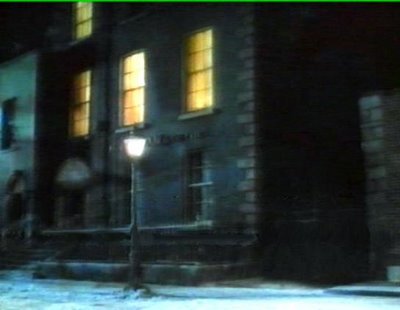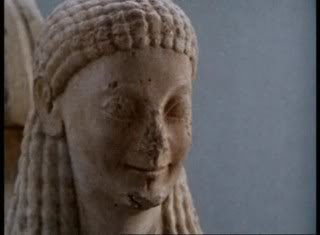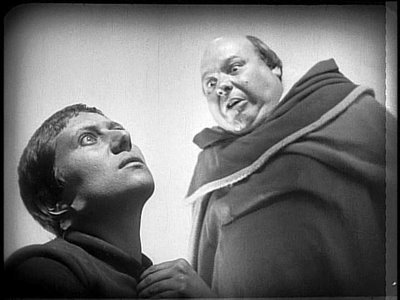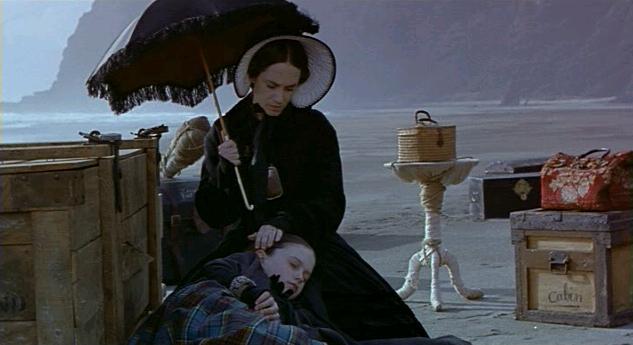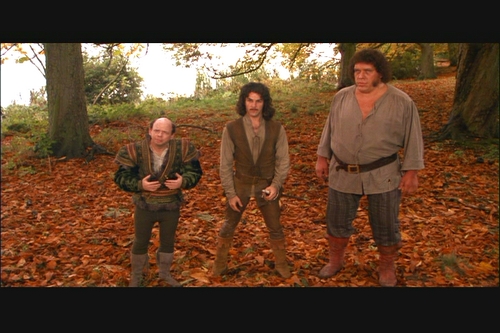These are expanded Chicago Reader capsules written for a 2003 collection edited by Steven Jay Schneider. I contributed 72 of these in all; here are the fourth dozen, in alphabetical order. — J.R.
Taste of Cherry
A middle-aged man who’s contemplating suicide drives around the hilly, dusty outskirts of Tehran trying to find someone who will bury him if he succeeds and retrieve him if he fails. This minimalist yet powerful and life-enhancing feature by Abbas Kiarostami (Where Is the Friend’s House?, Life and Nothing More, Through the Olive Trees) never explains why the man wants to end his life, and is even inconclusive about whether or not he succeeds, yet every moment in his daylong odyssey carries a great deal of poignancy and philosophical weight. The film has remained in many ways Kiarostami’s most controversial film ever since it shared the 1997 paume d’or at Cannes with Shohei Imamura’s The Eel, in part because it entrusts so much of its meaning and power to the audience and the nature of its own investment in what it’s watching. Like many of Kiarostami’s other films, it’s centered around the simultaneously private and public experience of a character in a car giving rides to others, and just as the experience of watching a film in a theater combines private responses with public reactions, this is a film that speaks to both of these situations. We attend to this film alone, and with others.
Kiarostami — working without a script, yet constructing his story basically out of dialogues taking place in a car — filmed each of his actors separately while himself occupying either’s the driver’s seat or the passenger’s seat, provoking the nonprofessional actors’ lines as if interviewing them. Thus the subject of isolation that lies at the heart of the film is integral to the way it was filmed. Does one identify with the unhappy hero, with the Iranian soldier, Afghan seminarian, and Turkish taxidermist he converses with, or with all four? Kiarostami is a master at filming landscapes and constructing parablelike narratives whose missing pieces solicit the viewer’s active imagination, and this extends even beyond the film’s plot and characters to its surprisingly cheerful, self-referential coda —- an epilogue centered on camaraderie that follows this story about profound isolation, radiating with wonder and euphoria.
Tetsuo: The Iron Man
An exceptionally kinky and violent Japanese experimental feature by Shinya Tsukamoto (1989) that’s a prime candidate for midnight cult status. The dialogue is minimal, but the principal meanings are clear enough: this is a highly fragmented, frequently pixilated account of a man and woman, both partially transformed into metal, copulating and mutilating each other with passion and energy. Basically a surreal heavy-metal fantasy like the Mad Max pictures, with gory, slimy textures that recall Eraserhead, and over the top in every respect, Tetsuo: The Iron Man contains enough frenetic motion that you probably won’t be bored, though you may find yourself worn out before the 67 minutes are over. This is obviously not for every taste — but if you like it, there’s a fair chance you’ll like it a lot. Japanese critics have reportedly described Tsukamoto as Japan’s answer to Sam Raimi, David Cronenberg, and David Lynch, and Tony Rayns has aptly noted that the movie “springs from all the fantasy entertainment Japanese kids grow up with: Godzilla movies, sci-fi animation, manga comic strips and ‘hardcore’ rock music,” despite the relatively grown-up fantasies that Tsukamoto makes out of them. Shortly thereafter, he turned out a “sequel” called Tetso 11: Bodyhammer that was actually closer to a color remake —- more conventional in terms of plot, but consequently less interesting or memorable.
The Dead
The late John Huston devoted the better part of his career to a cinema predicated on the adaptation of literary works — informed by crafty casting and fluid storytelling, but often limited by the fact that his attraction to heavyweights like The Maltese Falcon, The Red Badge of Courage, Moby-Dick, “The Man Who Would Be King,” Wise Blood, and Under the Volcano guaranteed “faithful” reductions at best. His last film (1987), which adapts the final story in James Joyce’s Dubliners, represents the apotheosis of this position –isolating the story from the rest of Dubliners and most of its perfectly composed language, and then doing his best with what remains. Working with a script by his son Tony and starring his daughter Anjelica as Gretta Conroy, he hews to the original and much of its dialogue with rigorous affection, and within its acknowledged restrictions, the film’s concentrated simplicity and purity achieve a kind of perfection. The uniformly superb cast includes Donal Donnelly, Cathleen Delany, Helena Carroll, Ingrid Craigie, Frank Patterson, Dan O’Herlihy, and Donal McCann as Gabriel Conroy; the lilting Irish flavor is virtually decanted, and Fred Murphy’s gliding camera movements are delicately executed. There’s also a rather awesome directness as well as calmness about the way that Huston contemplates his own rapidly approaching death.
The Double Life of Véronique
Krzysztof Kieslowski’s first feature after his Decalogue, launching the European coproduction mode of making films that would lead to his trilogy Three Colors (Blue, White, and Red), is an exquisite enigma following the parallel lives of two 20-year-old women, one in Poland and one in France, both played by the beautiful Irene Jacob. As in Three Colors, European coproduction becomes not only a means of financing, but part of the formal and thematic conceptualization of the project. The Polish Veronika is a talented singer with a heart condition; the French Veronique quits her voice lessons and gets involved with a puppeteer who writes children’s books. Masterfully directed, this rather dreamlike 1991 production is simultaneously an effort on Kieslowski’s part to hold onto to his Polish identity and an equally determined effort to move beyond it — almost as if the filmmaker were dreaming of a resurrected artistic identity for himself as Polish state financing went the route of Polish communism. With Philippe Volter, Halina Gryglaszewska, Kalina Jedrusik, and Aleksander Bardini. (JR)
The Horse Thief
Tian Zhuangzhuang’s 1985 second feature (after On the Hunting Ground), set in the remote wilds of Tibet with a cast of local nonprofessionals, is a breathtaking spectacle in ‘Scope and color — perhaps the most personal of all the “Fifth Generation” Beijing films to have emerged from the People’s Republic of China, at least until Tian’s subsequent The Blue Kite (see separate capsule). Tian’s originality and mastery of sound and image communicate directly, beyond the immediate trappings of the film’s slender plot (an occasional horse thief expelled from his clan for stealing temple offerings) and regional culture (with particular attention to Buddhist death rituals), expressing an environmental and ecological mysticism that suggests a new relationship between man and nature. The relatively small roles played by dialogue and story line and the striking handling of composition and superimposition make it evocative of certain western films
of the 1920s, though it is far from being a silent film: the chants, percussion, and bells of Buddhist rituals and the beautiful music score accompanying them are an essential part of the film’s texture.
The film suffered two minor forms of censorship from government authorities prior to its release. One of these, ironically, was an addition rather than a subtraction —- the date 1923 flashed on the screen before the first image, which places the action in a specific period other than the present rather than making it more timeless, which was the director’s intention. The other was the elimination of corpses from the first of the film’s three “sky burials,” when human bodies are fed to carrion crows. But the story — a parable about a reluctant thief who becomes a more methodical thief once he becomes a social outcast, in order to feed his family — remains intact, and the modernist style was similarly untampered with, despite the fact that the film was barely seen at all in mainland China due to its focus on a minority culture and its overall eclecticism. Tian has said that he made this for the 21st century, and it is certainly a film aimed towards the future.
The Killing of a Chinese Bookie
John Cassavetes’s first crime thriller, a postnoir masterpiece, failed miserably at the box office when first released in 1976, and a recut, shorter version released two years later, the one that’s generally made available today in prints and on video, didn’t fare much better. This is the first, longer, and in some ways better of the two versions; it’s easier to follow, despite reports that — or maybe because — Cassavetes had less to do with the editing (though he certainly approved it). A personal, deeply felt character study rather than a routine action picture, it follows Cosmo Vitelli (Ben Gazzara at his very best), the charismatic owner of an LA strip joint — simultaneously an asshole and a saint — who recklessly gambles his way into debt and has to bump off a Chinese bookie to settle his accounts. In many respects the film serves as a personal testament; what makes the tragicomic character of Cosmo so moving is its alter-ego relation to the filmmaker — the proud impresario and father figure of a tattered showbiz collective (read Cassavetes’s actors and filmmaking crew) who must compromise his ethics to keep his little family afloat (read Cassavetes’s career as a Hollywood actor). Peter Bogdanovich used Gazzara in a similar part in Saint Jack (1979), but as good as that film is, it doesn’t catch the exquisite warmth and delicacy of feeling of Cassavetes’s doom-ridden comedy-drama. With fine performances by Timothy Agoglia Carey, Seymour Cassel, Azizi Johari, Meade Roberts, and Alice Friedland. (JR)
The Manchurian Candidate
One of the strangest and most mercurial movies ever made in Hollywood, adapted from a novel of the same name by Richard Condon, The Manchurian Candidate was originally released in 1962 and then unseen for years after its star, Frank Sinatra, purchased the rights in the 70s and withdrew the film from circulation. A veritable salad of mixed genres and emotional textures, this exciting black-and-white political thriller runs more than two hours and never flags for an instant. Produced by director John Frankenheimer (whose extensive background in TV drama is reflected in the fascinating and disorienting use he makes of TV monitors at a hysterical press conference) and screenwriter George Axelrod (whose satiric gifts, flowering four years later in his own demonic comedy Lord Love a Duck, were indispensable to the project), the film was green-lighted with the active encouragement of President John F. Kennedy, a fan of the novel and a friend of Sinatra. Thanks to this heady mix of elements, the film was made with an unusual amount of freedom, which pays off in multiple dividends.
It’s conceivably the only commercial American film that deserves to be linked with the French New Wave, full of visual and verbal wit that recalls Orson Welles. Early on, there’s a virtuoso 360-degree pan moving around a lady’s garden club meeting that gradually and inexplicably turns into a demonstration of brain-washing by Chinese communists —- a sequence that manages to evoke the hallucinatory qualities of Last Year at Marienbad while etching out a literal cold war nightmare worthy of Joseph McCarthy, and the politically incorrect audacity only expands from there, eventually widening to include irreverent satire, ghoulish black humor, surrealist nonsense, and incest. (There’s also the first extended martial-arts scene in a commercial American feature.) What’s perhaps most surprising about The Manchurian Candidate is the way it continues to function like a Hollywood thriller while scattering wild cards everywhere it turns. Angela Lansbury and Laurence Harvey, both brilliantly cast as evil mother and masochistically subservient son, have never been better; Sinatra and Janet Leigh have never been used as weirdly; and the talented secondary cast — including James Gregory, James Edwards, Leslie Parrish, John McGiver, and Khigh Dhiegh — is never less than effective. A powerful experience, alternately corrosive with dark parodic humor, suspenseful, moving, and terrifying.
Méditerranée
Jean-Daniel Pollet’s 43-minute Méditerranée —- shot in 1963 and first shown publicly four years later –remains the most influential of his experimental films (its impact on Jean-Godard’s 1963 Contempt is especially striking), and one reason why it remains so impressive as a minimalist tour de force is that Pollet was able to spend so much time editing it. Accompanied by an evocative text written by Philippe Sollers and a haunting score by Antoine Duhamel (who also wrote the music for Godard’s Pierrot le fou), the footage, which was shot in various countries around the Mediterranean —- a Sicilian garden, a Greek temple, a fisherman, a young girl on an operating table —- reappears throughout the film, each time appearing in a separate order and for different lengths of time.
The film inspired one of Godard’s most poetic critical texts for Cahiers du Cinéma —- written in 1964 but published in 1967 — in which he wrote, “In this banal series of 16mm images over which breathes the ineffable spirit of 70mm, it is up to us to discover the space which only the cinema can transform into lost time…or rather the contrary …for here are smooth, round shots abandoned on the screen like pebbles on the beach.”
The Palm Beach Story
Rudy Vallee turns in his all-time best performance as a gentle, puny millionaire named John D. Hackensacker III in this brilliant, simultaneously tender and scalding 1942 screwball comedy by Preston Sturges — one of the real gems in Sturges’s hyperproductive and high-level period at Paramount, which abounds in first-rate comedies. Claudette Colbert, married to an ambitious but penniless architectural engineer (Joel McCrea), takes off for Florida and winds up being wooed by Hackensacker. When McCrea shows up she persuades him to pose as her brother. Also on hand are such indelible Sturges creations as the Weenie King (Robert Dudley), the madly destructive Ale and Quail Club, Hackensacker’s acerbic sister (Mary Astor), her European boyfriend of obscure national origins (Sig Arno, who mutters in a hilariously incomprehensible language throughout), and many of the Sturges regulars, including William Demarest, Jack Norton, Franklin Pangborn, and Jimmy Conlin, who are every bit as funny.
The Hackensacker character may be the closest thing to a parodic self-portrait in the Sturges canon, but it’s informed with such wry wisdom and humor that it transcends its personal nature (as well as its reference to such tycoons as Rockefeller, as his first name and middle initial suggests). The part was written expressly for Vallee after Sturges saw him in a small part in a film musical, noticed that the audience laughed every time he opened his mouth, and concluded that the man was hilarious without even knowing it. It might be added that unawareness plays a major role in Sturges’s conception of comedy, extending to the gullibility of viewers as well as characters: the frantic opening sequence, played out in bewildering pantomime during the credits, is an excellent example of “giving away” the plot’s surprise ending well before the audience can even begin to grasp what’s going on. As critic James Harvey aptly noted, “In this movie, whenever reality becomes a problem —- on the way to Penn Station, for example [when a cab driver played by Frank Faylen agrees to take Colbert there for nothing] —- “it’s simply revoked.”
The Passion of Joan of Arc
Carl Dreyer’s 1928 masterpiece — his last silent film, and the greatest of all Joan of Arc films —- is the work of his that brought him worldwide fame, although, like most of his subsequent films, it was strictly a succès d’estime, and fared poorly at the boxoffice. A print of the original version — lost for half a century — was rediscovered in a Norwegian mental asylum in the 1980s. (Other prints had perished in a warehouse fire, and the two versions subsequently circulated consisted of outtakes.)
All of Dreyer’s films were based on works of fiction or plays, with the exception of La Passion de Jeanne d’Arc, which was essentially based on the official transcripts of the proceedings of Joan’s trial —- albeit highly selective and radically compressed portions of that trial. It was made only eight years after Joan was canonized in France and ten years after the end of World War 1, and both these facts were central to Dreyer’s interpretation. The helmets worn by the occupying British in 1431 resemble those in the recent war, and 1928 audiences saw the film as a historical “documentary” rather like the later films of Peter Watkins.
Joan is played by Renée Falconetti, a stage actress Dreyer discovered in a boulevard comedy, and following his instructions, she played the part without makeup. She and her interlocutors are filmed almost exclusively in closeups. Though hers is one of the key performances in the history of movies, she never made another film. (Antonin Artaud also appears in his most memorable screen role, as the sympathetic brother Massieu.)
Dreyer’s radical approach to constructing space and the slow intensity of his mobile camera style make this a “difficult” film in the sense that, like all the greatest films, it reinvents the world from the ground up. It’s also painful in a way that all Dreyer’s tragedies are, but it will continue to live long after most commercial movies have vanished from memory.
The Piano
Sweetie and An Angel at My Table taught us to expect startling as well as beautiful things from Jane Campion, and this assured and provocative yet third feature (1993) offers yet another lush parable — albeit a bit more calculated and commercially minded — about the perils and paradoxes of female self-expression. Set during the last century, this original story by Campion — which evokes at times some of the romantic intensity of Emily Bronte — focuses on a Scottish widow (Holly Hunter) who hasn’t spoken since her childhood, presumably by choice, and whose main form of self-expression is her piano playing. She arrives with her nine-year-old daughter (Anna Paquin) in the New Zealand wilds to enter into an arranged marriage, which gets off to an unhappy start when her husband-to-be (Sam Neill) refuses to transport her piano. A local white man living with the Maori natives (Harvey Keitel) buys the piano from him and, fascinated by and attracted to the mute woman, agrees to “sell” it back to her a key at a time in exchange for lessons, with ultimately traumatic consequences. Setting out to be politically correct, erotic, and romantic at the same time, the film inevitably bites off more than it can possibly chew, and winds up stimulating passionate feelings more often than thoughts; when the heroine is finally learning how to speak at the end, we don’t exactly feel ready to listen.
The Princess Bride
Rob Reiner’s friendly 1987 fairy-tale adventure delicately mines the irony inherent in its make-believe without ever undermining the effectiveness of the fantasy. The framing device is a grandfather (Peter Falk) reading a favorite book aloud to his skeptical grandson (Fred Savage), and Reiner uses the grandson’s initial recalcitrance as both a challenge and a safety net. In the imaginary kingdom of Florin, the beautiful Buttercup (Robin Wright) is separated from the farmhand she loves (Cary Elwes), betrothed to the evil Prince Humperdinck (Chris Sarandon), and spirited away by the nefarious Vizzini (Wallace Shawn).
The colorful characters and adventures are, at their best, like live-action equivalents of Disney animated features, with lots of other fond Hollywood memories thrown in: Andre the Giant seems a cross between Andy Devine and Lumpjaw the Bear, while Mandy Patinkin’s engaging Inigo Montoya conjures up Gene Kelly in The Pirate. Not even the crude ethnic humor — Billy Crystal’s Mel Brooks-ish Miracle Max — pricks the dream bubble, and the spirited cast has a field day. Adapted by William Goldman from his own novel; with Christopher Guest as a six-fingered sadist, Peter Cook as a lisping clergyman, and Carol Kane as Max’s wife.


